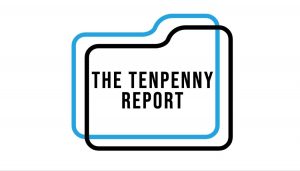What comes to mind when you think of Montana? Rugged landscapes and rugged people? Beautiful mountains? Elk? Biolabs?
Wait, biolabs?
Yes, that’s right. How many Montana residents know they have a biolab in their backyard? NIH boasts about their state-of-the-art biomedical research facility located between the Bitterroot and Sapphire Mountains in the small community of Hamilton, Montana. It is called the Rocky Mountain Laboratories (RML), and its most recent addition is a Comparative Medicine Center, to be completed in Spring 2024. Who is funding it? None other than NIAID, the National Institute of Allergies and Infectious Diseases, better known as the agency run for decades by Anthony Fauci. The CARES Act made the funding ultimately possible, and naturally, in line with the CARES Act mission to increase COVID-19 research capabilities, the new RML building will allow NIAID to expand its research in response to future infectious disease outbreaks. The building will replace two other buildings constructed in the 1960s.
That’s right, this lab has been nestled in the foothills for quite a while. In fact, the lab is over 100 years old. Starting out in a woodshed, scientists began studying the cause for “black measles”, a severe dark rash that was striking down settlers. Interestingly, the local folk suggested that the infection occurred from drinking melted snow water during spring runoff. The outbreak was severe, resulting in 4 out of 5 fatalities, so the community appealed to the governor for help. In 1901, Montana created the State Board of Health, and its first priority was bringing more scientists to the Bitterroot Valley to investigate this deadly disease in one of the newest states in the Union (having achieved statehood just 10 years prior in 1889).
 The lab moved to a local schoolhouse in 1928 and was thereafter known as the Canyon Creek Schoolhouse Laboratory, run by the state of Montana. The state teamed up with the Hygienic Laboratory, the precursor to NIH. Not only did the team describe a new disease, Rocky Mountain Spotted Fever (RMSF), they also developed a vaccine for it in record time (22 years) — quite a feat given the technology available at the time.
The lab moved to a local schoolhouse in 1928 and was thereafter known as the Canyon Creek Schoolhouse Laboratory, run by the state of Montana. The state teamed up with the Hygienic Laboratory, the precursor to NIH. Not only did the team describe a new disease, Rocky Mountain Spotted Fever (RMSF), they also developed a vaccine for it in record time (22 years) — quite a feat given the technology available at the time.
RMSF is caused by a bacteria (Rickettsia rickettsii) carried by ticks. In 1906, the government brought in Dr. Howard Ricketts, a young pathologist from the University of Chicago who showed that the disease was transmitted by the bite of the Rocky Mountain wood tick (Dermacentor andersoni). The pathogen was named after Dr. Ricketts. The disease was often fatal, and several of the scientists studying the disease actually died after being infected.
History Repeats Itself
There are some very interesting notes about this early lab that truly show how history indeed repeats itself. First, the disease only appeared on the west side of the mountains, but the lab was located in another part, so residents worried that the ticks would escape the facility and infect the town. (Wuhan, anyone?) To alleviate fears, a moat was built around the facility, surmising that ticks could not swim. Second, a tick eradication program was created. Ranchers were “encouraged” (with threat of quarantine) to drive their cattle herds to one of several arsenic dipping stations in the area. The cattle were forced to swim through a trough of arsenic solution, but getting the formulation right to not kill the cattle was trial and error. Local ranchers, who already had a healthy distrust of government, greatly resented the “optional” dipping, and resented the government even more after family farm workers who were forced to help at the stations contracted the infection and died. In fact, local residents actually blew up one of the vats and damaged another with sledgehammers in protest.
 The science of those early days began the research into other tick-borne diseases, like Lyme disease and Q fever, ultimately resulting in the creation of RML and acquisition by NIAID. Today, NIH considers RML to be a premiere gem and “key component” in its arsenal of 27 institutes and centers. NIH says the lab deals with more pressing issues today, such as influenza, prion diseases and antibiotic-resistant bacteria. Lab research also focuses on Lyme disease, salmonella, tularemia and encephalitis. And they have lots of room for study – the facility in Montana has 36 acres of land that houses 30 buildings and 450 employees.
The science of those early days began the research into other tick-borne diseases, like Lyme disease and Q fever, ultimately resulting in the creation of RML and acquisition by NIAID. Today, NIH considers RML to be a premiere gem and “key component” in its arsenal of 27 institutes and centers. NIH says the lab deals with more pressing issues today, such as influenza, prion diseases and antibiotic-resistant bacteria. Lab research also focuses on Lyme disease, salmonella, tularemia and encephalitis. And they have lots of room for study – the facility in Montana has 36 acres of land that houses 30 buildings and 450 employees.
The agency goes on to say that RML’s history of studying exotic diseases makes the lab uniquely qualified to study emerging infectious diseases and “priority pathogens related to biodefense”: RML “plays a central role in conducting research that could help safeguard the public against infectious disease threats, including a possible bioterror attack.” Mmm hmmm. This explains why the lab received one of the first coronavirus research samples in 2019. Lab researchers focus on molecular traits of microbes, studying not only what the microbe is composed of but also how it behaves in different environments. In short, the lab finds the most effective targets for fighting the microbe, and then develops chemicals to generate an immune response against it. Mmm hmmm. In 2008, the Integrated Research Facility opened. It is a first-of-its-kind NIH lab to have BSL-2, BSL-3, and BSL-4 laboratory space in one building. (Note that Wuhan is a BSL-4 lab.)
Gain of Function Ties?
Interestingly, the facility also has a genomics research section to study gene sequencing and gene expression, and Cryo-EM capabilities that allow near-atomic imaging resolution of viruses and proteins. The lab seems to have the best technology, and now Congress has questions about why the lab was experimenting with coronavirus over a year before the pandemic. It seems that 2019 was not the first sample received. In fact, a researcher from the Wuhan Institute of Virology (WIV) in China visited the RML in 2018 to conduct “potentially risky research” with 12 coronavirus-infected Egyptian fruit bats. The coronavirus was obtained from WIV and let’s not forget that BOTH labs were funded by the NIH under Fauci’s leadership. Furthermore, as late as 2022, RML named Peter Dacsak’s EcoHealth Alliance as a partner on cross-species transmission of coronavirus! Let’s not forget that NIAID funded gain-of-function research through the nonprofit EcoHealth. Why on Earth would RML want to be associated with such a shady person and organization?
The seemingly shady ties have definitely put RML on Congress’ radar screen. In fact, Congress is asking what pandemic-potential pathogens, other than coronavirus, the lab is working on, and whether the RML is using gain-of-function research to modify those pathogens to become more infectious and deadly. Congress is particularly concerned about past security breaches at the facility, and is therefore questioning the potential for a Wuhan-like lab leak to occur.
 In fact, Montana Rep. Matt Rosendale has put forward an amendment to strip RML of its research funding, citing the fact that no lab-received funds can be used to conduct or support any type of gain-of-function research involving a potential pandemic pathogen. Rosendale’s critics say his claims are unfounded, but Rosendale stands firm, stating: “The evidence is clear — Fauci expanded Rocky Mountain Laboratories in Hamilton, MT, and spent millions to infect bats with a coronavirus obtained directly from the Wuhan Lab one year before the COVID-19 outbreak.” NIAID has denied the claims as well, stating that Rosendale has “erroneously characterizated” the situation. NIAID states that the lab studied WIV-1, a coronavirus different from SARS-COV-2, and that samples did not come from China, but were generated based on “genetic information publicly shared by Chinese scientists.” The RML scientists have expertise in coronaviruses dating back two decades, to the original SARS-CoV-1 (2003), MERS-CoV (2012) and SARS-CoV-2. RML was also an early tester of remdesivir, and per NIH, instrumental in showing how effective it was against COVID. Oh, and the labs also study Sudan virus (one of the viruses known to cause human Ebola).
In fact, Montana Rep. Matt Rosendale has put forward an amendment to strip RML of its research funding, citing the fact that no lab-received funds can be used to conduct or support any type of gain-of-function research involving a potential pandemic pathogen. Rosendale’s critics say his claims are unfounded, but Rosendale stands firm, stating: “The evidence is clear — Fauci expanded Rocky Mountain Laboratories in Hamilton, MT, and spent millions to infect bats with a coronavirus obtained directly from the Wuhan Lab one year before the COVID-19 outbreak.” NIAID has denied the claims as well, stating that Rosendale has “erroneously characterizated” the situation. NIAID states that the lab studied WIV-1, a coronavirus different from SARS-COV-2, and that samples did not come from China, but were generated based on “genetic information publicly shared by Chinese scientists.” The RML scientists have expertise in coronaviruses dating back two decades, to the original SARS-CoV-1 (2003), MERS-CoV (2012) and SARS-CoV-2. RML was also an early tester of remdesivir, and per NIH, instrumental in showing how effective it was against COVID. Oh, and the labs also study Sudan virus (one of the viruses known to cause human Ebola).
But I’m sure it’s just all a big misunderstanding. I’ll make sure to keep you updated on any significant changes regarding what’s going on at the RML as you can be certain they are ramping things up for the coming months ahead.
++++++++++++++++++++++++++++++++
 Like what you’re reading on The Tenpenny Report? Share this article with your friends. Help us grow.
Like what you’re reading on The Tenpenny Report? Share this article with your friends. Help us grow.
Get more of Dr. Tenpenny’s voice of reason at her website.
Join our list here
++++++++++++++++++++++++++++++++
Fed Up Texas Chick is a contributing writer for The Tenpenny Report. She’s a rocket scientist turned writer, having worked in the space program for many years. She is a seasoned medical writer and researcher who is fighting for medical freedom for all of us through her work.

